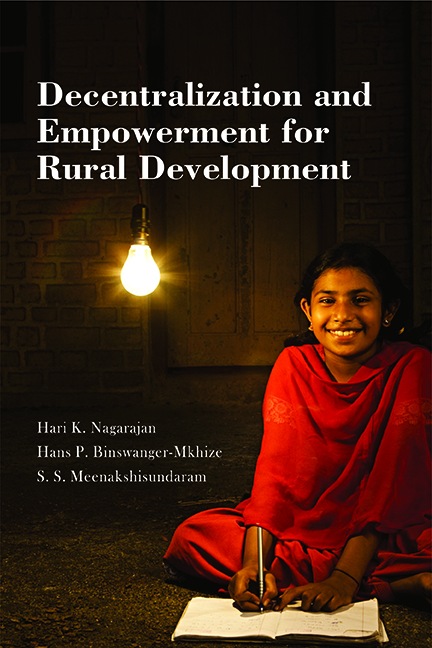Book contents
- Frontmatter
- Contents
- List of Tables and Figures
- Foreword 1
- Foreword 2
- Preface
- 1 Introduction
- 2 Decentralization: Cross-country Experiences
- 3 Thinking about Decentralization in India: 73rd Amendment and Beyond
- 4 Literature
- 5 An Overview of the Data
- 6 Analytical Approaches and Econometric Methods Used
- 7 Can Panchayats Improve the Quality of Services? Some Qualitative Evidence
- 8 Impact of Political Reservations for Women in Panchayats
- 9 Importance of Individual Empowerment of Women
- 10 Governance, Service Provision and Development Outcomes
- 11 The Impact of Fiscal Grants on Tax Efforts of Village Panchayats
- 12 Incidence of Identity-based Voting and Bribes in Panchayats
- 13 Panchayats and Household Vulnerability
- 14 Key Findings, Conclusions and Policy Recommendations
- References
- Index
- About the Authors
5 - An Overview of the Data
Published online by Cambridge University Press: 30 November 2022
- Frontmatter
- Contents
- List of Tables and Figures
- Foreword 1
- Foreword 2
- Preface
- 1 Introduction
- 2 Decentralization: Cross-country Experiences
- 3 Thinking about Decentralization in India: 73rd Amendment and Beyond
- 4 Literature
- 5 An Overview of the Data
- 6 Analytical Approaches and Econometric Methods Used
- 7 Can Panchayats Improve the Quality of Services? Some Qualitative Evidence
- 8 Impact of Political Reservations for Women in Panchayats
- 9 Importance of Individual Empowerment of Women
- 10 Governance, Service Provision and Development Outcomes
- 11 The Impact of Fiscal Grants on Tax Efforts of Village Panchayats
- 12 Incidence of Identity-based Voting and Bribes in Panchayats
- 13 Panchayats and Household Vulnerability
- 14 Key Findings, Conclusions and Policy Recommendations
- References
- Index
- About the Authors
Summary
From Chapter 4, it was possible to infer some of the lacunae in the literature. One of these is the fact that much of the literature is unable to place either the household or a member of the household within a policy space. Consequently, the analysis of household or member level reactions to policy changes or the impact of such reactions on policy is quite sparse. A feature of the analysis presented in this book is the use of a unique panel data of household members, households, villages and panchayats that allows for identification of the relevant policy connections and impact among these units of analysis. For example, this allows us to evaluate the consequences of political participation and decisions of the panchayat on household-level choices and development outcomes in terms of literacy, health, consumption and income.
The basis of the data used for the analysis presented in this book is the Additional Rural incomes Surveys (ARIS) of 1968–69. Three annual rounds of these surveys were conducted ending in 1970–71. The ARIS survey was repeated in 1982, 1999 and 2006. However, starting with 1982 this was renamed as Rural Economic and Demography Survey. The details of the sample selection and some of the summary features of the data are outlined in this chapter.
Sample
ARIS was designed to obtain data on income, investment, saving and consumer expenditure in rural India, from a panel of households first selected in 1968–69. A sample of 5115 households across 17 states was selected according to a multistage stratified probability sampling. The basic unit of the sample was the household. Since it was not feasible to sample the households as the first stage, a list of all villages in a given district or a community development block (CD block) was prepared. These villages were divided into three strata. Villages, covered by the Intensive Agricultural Development Programme (IADP),1 were classified as Stratum 163 villages were selected across 15 states (except Haryana and Himachal Pradesh) for the study. All villages in the community blocks where the Intensive Agricultural Area Programme (IAAP) had been implemented were grouped to form Stratum 2.
- Type
- Chapter
- Information
- Decentralization and Empowerment for Rural Development , pp. 96 - 118Publisher: Foundation BooksPrint publication year: 2014



